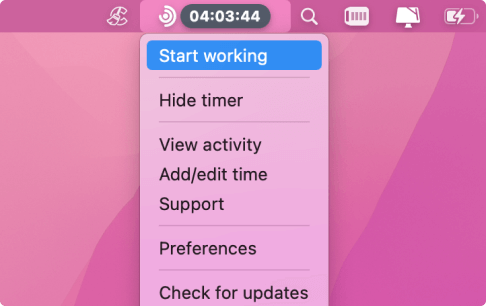
Curious about what impacts your productivity the most? In this article, we identify the top 10 productivity factors that you should consider if you want to improve your work efficiency. Learn how different elements such as work environment, leadership, technology, and other key factors that affect productivity and what you can do to drive better outcomes.
Key Takeaways
A supportive physical and cultural setting significantly boosts employee productivity and helps develop more productive employees.
Strong leadership that fosters trust and engagement creates a culture driving development employees need to perform at their best.
Clear goals and open communication enhance accountability, making it easier to train employees effectively for better teamwork.
Data-driven decisions about workload management and wellness initiatives prevent burnout while improving efficiency and well-being.
The Impact of a Productive Work Environment on Efficiency

The work environment plays a crucial role in employee productivity. A well-designed physical workspace can significantly impact employee task performance. A thoughtfully designed workspace can boost productivity. Output can increase by as much as 20%. Office layout, quality of furniture, and even color schemes can greatly affect people’s mental state and ultimately affect employee productivity. For instance, a workplace environment with an open-plan design, which, while popular, often leads to distractions, reducing overall productivity.
Essentially, it boils down to employee comfort. Empowering employees to create their own ergonomic workspaces is a great way enhance their focus and efficiency. Additionally, maintaining comfortable temperature control settings is shown to raise productivity growth by 5 to 15% whereas poor lighting can reduce it by 13%.
Beyond physical factors, organizational culture is another aspect of the workplace environment that significantly influences morale and productivity. Conversely, a work environment filled with stress, micromanagement, and conflict can hinder creativity and collaboration, leading to decreased productivity.
Leadership’s Role in Enhancing Productivity

Strong leadership drives employee productivity. Effective leaders inspire and motivate teams, thus enhancing workforce productivity, so the leader-employee relationship is crucial for fostering productive employees. Employees are 14 times more likely to be engaged when they trust their leaders.
Providing managers with the right training and tools is essential. Leadership training and one-on-one coaching enhance leadership effectiveness, allowing managers to promote clear communication and recognizing worker’s achievements. Effective leaders should model clear communication, consistency, and supportive behaviors. Employees who feel valued and supported are more engaged and motivated, contributing to a positive culture and higher productivity.
Leaders help employees work more efficiently. Clear direction, realistic goals, and an environment of trust help employees manage tasks efficiently and creates a productive environment where employees can thrive.
The Importance of Clear Communication
Clear communication is a key factor to the success of any organization, playing a crucial role in enhancing collaboration, teamwork, and reducing misunderstandings. Organizations should provide effective communication and collaboration tools, including both synchronous and asynchronous options, to enhance overall communication efficiency.
Effective communication policies, such as setting meeting frequencies and guidelines, help prevent overload. These measures foster seamless communication, creating a positive environment and boosting productivity.
Open channels encourage feedback and concerns, enhancing engagement, while clear, open communication allows employees to focus efficiently, contributing to the achievement of organizational goals.
Using Technology and Tools for Increased Efficiency

In the digital age, technology is key to enhancing employee productivity. Automation tools can help eliminate repetitive tasks, allowing employees to focus on more creative and strategic work. Implementing new technologies successfully requires ongoing evaluation to gauge its impact on productivity. Assessing productivity involves collecting data beyond time tracking to evaluate technology’s impact effectively.
Performance analytics identify productivity trends and areas for improvement, particularly for remote workers. Cloud-based tools increase accessibility, enabling efficient work from anywhere. Time tracking software like Traqq offers automation, easy access, and integration with other tools, enhancing overall performance organization.
Leveraging these technologies helps organizations create environments where employees manage tasks efficiently, while continuous improvement and adaptation to new tools are crucial for maintaining a competitive edge.
Balancing Workload for Optimal Productivity
Effective workload management enhances productivity and satisfaction though a healthy work-life balance. A feedback system enables team members to voice workload concerns and identify areas for improvement. Clear communication channels among team members improve both workload management and performance management and project outcomes.
At the same time, project management tools help visualize task distribution and ensure even resource allocation, while broader workforce management strategies support this alignment across teams. Flexible task assignments and dynamic reallocation of responsibilities maintain balanced workloads. Conversely, workload imbalances lead to poor stress management and increase the risk of burnout among overworked employees.
Measuring the time employees spend on tasks and total hours worked through time tracking tools like Traqq are essential elements of time management. Additionally, by applying methodologies such as the Pomodoro Technique, which is the practice of breaking tasks into intervals with short breaks, you can improve focus and efficiency.
Employee Health and Wellness Programs

Health and wellness programs are vital for productivity, mental well-being and physical health. Employee well-being fosters a thriving work environment. Comprehensive health benefits, including mental health, vision, and dental care, significantly improve well-being.
Such programs typically reduce sick leave absenteeism by 25%. Encouraging breaks and offering wellness activities like gym memberships also promote well-being, while mental health support reduces stress and burnout. Furthermore, targeted programs such as smoking cessation initiatives improve health and reduce healthcare costs.
There are plenty of programs an organization can implement to promote employee well-being. For example, regular workplace health screenings can help identify potential issues early, allowing for timely interventions, while healthy food options at work can enhance cognitive function and energy levels. Additionally, wellness-focused team-building activities promote social connections and strengthen relationships.
Investing in health and wellness creates a highly productive workforce that supports job satisfaction and ultimately increase productivity.
Training and Development Opportunities
Ongoing training is a no-brainer when it comes to productivity. Prioritizing training and development equips employees to handle new and complex challenges, which helps boost engagement and retention. Training typically include job-specific skills, essential soft skills, and leadership abilities and can be implemented to either individual employees or via group sessions.
Training that develops employees should align career growth with company goals. Leaders who encourage employees to pursue continuous learning create a positive work environment where productivity can flourish. Employee feedback is crucial for designing effective programs that genuinely support professional development.
Studies show that comprehensive training programs can increase income per employee by 218%. By investing in continuous training, organizations promote labor productivity growth while providing career advancement opportunities. Additionally, when companies prioritize mental health resources and physical health alongside professional skills, they positively affect productivity through better work-life balance.
The combined inputs of well-trained staff and effective training systems lead to higher units produced, maximizing both employee satisfaction and business outcomes.
Incentives and Recognition Systems

Recognition boosts employee motivation and job satisfaction, leading to improved employee satisfaction and productivity. Employees are almost three times more engaged when they expect to recognize accomplishments. Timely recognition should follow accomplishments to reinforce positive behavior.
Personalized recognition resonates with individual contributions. Recognition programs foster emotional connections, enhancing loyalty and reducing turnover. Extrinsic motivation examples include rewards, recognition, bonuses, and annual awards.
Organizations with formal recognition systems report 12 times better outcomes. Clear incentive programs and effective communication enhance employee morale, ensuring that employees feel valued. Announcing achievements regularly enhances organizational success.
Effective recognition systems foster a positive organizational culture that supports engaged employees and productivity in a supportive work environment.
Setting Clear Goals and Expectations
Clear goals give employees purpose and direction, boosting engagement while preventing the aimlessness that kills motivation. When these goals align with organizational goals, everyone works toward a shared vision.
Goals create accountability and make progress trackable. Clear expectations prevent misunderstandings, and involving employees in setting these goals enhances task management. Regular check-ins keep everyone on track.
Employees who meet their goals feel more satisfied and fulfilled. With clear targets, people can focus on what matters instead of busywork, leading to better performance and more efficient achievement of organizational goals.
Leveraging Data-Driven Insights to Improve Time Management
Data analytics help identify trends that boost workplace productivity. Tools like Traqq provide insights that help leaders make smarter decisions to improve total factor productivity. By spotting where time gets wasted, Traqq helps teams work more efficiently.
The software measures activity through keyboard and mouse movement, giving an accurate picture of how time is spent. Traqq offers complete access to monitoring features and tracks which websites and apps employees use, helping everyone stay focused on what matters.
When companies use these insights, they can identify trends, pinpoint where improvements are needed, and streamline workflows. Having good analytical tools keeps organizations competitive by ensuring total factor productivity continues to improve.
Summary
Throughout this article, we have explored the top 10 productivity factors that can significantly boost efficiency in the workplace. From optimizing the work environment and enhancing leadership to leveraging technology and setting clear goals, each factor plays a crucial role in creating a highly productive workforce.
By implementing these strategies, organizations can foster a positive organizational culture, enhance employee engagement, and achieve higher productivity growth. Remember, productivity is not just about working harder but working smarter. Embrace these factors, and watch your team’s productivity soar to new heights.
What are the 7 factors that influence efficiency?
The seven factors that influence efficiency are training and career development opportunities, the work environment, the compensation system, health and wellness initiatives, technology utilization, social relationships, and work hours. Addressing these can significantly enhance organizational productivity.
How does the work environment affect employee productivity?
A well-designed work environment, characterized by optimal office layout, adequate lighting, and comfortable temperature, enhances employee comfort and focus, thereby boosting productivity.
Why is leadership important for employee productivity?
Effective leadership is crucial for productivity as it inspires and motivates employees while fostering trust and providing clear direction. This creates an environment that enhances overall performance and efficiency.
What role does clear communication play in productivity?
Clear communication is crucial for productivity as it prevents misunderstandings and enhances teamwork, ensuring employees have the necessary information to perform effectively. This ultimately leads to improved outcomes and efficiency in the workplace.
How can technology improve productivity?
Technology can significantly boost productivity by automating tasks and utilizing time tracking and project management tools like Traqq, allowing for more efficient work processes and data-informed decision-making. Employing these tools leads to measurable enhancements in productivity.
